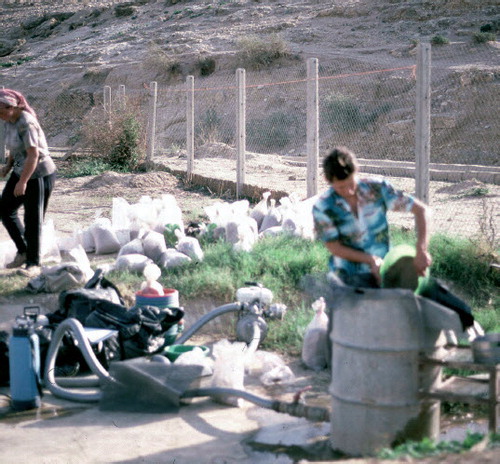The excavations of Tell Iktanu and Tell Hammam in Jordan were part of the Shu’aib/Hisban Project, conducted over four seasons (1966, 1987, 1989 and 1990). A further botanical survey was conducted in 1992, and air photography analysis was undertaken with David Kennedy in 1995. The project aimed at assessing a regional archaeology in the south-east Jordan Valley, and much has been published in preliminary reports and research articles since the field work was completed. (For a summary of the project see the Bulletin of the Council for British Research in the Levant, 2012, 52–53). Good progress on the completion of the final report on the excavation of the Early Bronze I, Intermediate Bronze Age and Iron Age occupation at Iktanu and of Early Bronze III remains at Hammam was made in 2014 and 2015, but other demands have since intervened.
The text of the stratigraphic and ceramic analysis of the Early Bronze I remains has been completed, with multiple phases distinguished on both the north and the south tells. The different areas have distinctive settlement patterns. Area D.I on the north tell has well preserved mudbrick structures on stone foundations, which continued to be rebuilt on the same alignment over a long period. Area C on the south tell had multiple rebuilds on different alignments of structures, of which only shallow stone foundations survive, suggesting interrupted occupation on the site. Excellent ceramic assemblages have been recovered from both areas. The remains continue to indicate they are those of a small unfortified agricultural settlement. The digitization and setting of the plans, sections, photographs and pottery is now complete.
A long period followed the abandonment of the Early Bronze I site so that the new settlement was founded in Area C directly on the eroded remains of the previous occupation and a ground surface littered with Early Bronze I sherds. These became associated with the first pottery breakages in the Intermediate Bronze Age occupation, and wherever the newcomers dug pits they disturbed not just the stratification, but the pottery of their predecessors. The long gap between the two occupations results in a very distinct separation of the pottery of the Early Bronze I and the later Intermediate Bronze Age, which permits clear analysis of the quantity of residual fragments in the fully recorded assemblage. This is of importance in considering the results obtained from multi-period sites where occupation was continuous, and where residuality affects the ceramic analysis. The study of residuality is particularly clear in Area C, where the Early Bronze I remains have been much cut into by multiple pits related to the Intermediate Bronze Age pottery kilns. In other areas the much more extensive settlement of the Intermediate Bronze Age was founded on virgin soil, with no sign of sherd spread from the geographically more limited occupation of the Early Bronze I period. The same process of residuality affected the second of the two phases of occupation in Area A in the Intermediate Bronze Age, when the second wave of Intermediate Bronze Age settlers rebuilt the partly collapsed houses over the slightly wind-silted courtyards. There is sufficient disparity to distinguish the two phases of Intermediate Bronze Age ceramics linked to the two phases of occupation, with an initial settlement of the later phase having mixed pottery of Phases 1 and 2, and later stages lacking the pottery of Phase 1. The Phase 2 Intermediate Bronze Age settlers rarely dug pits.
The stratigraphic analysis of the Intermediate Bronze Age occupation (late 3rd millennium) on the south tell is more than half completed, with the final copies of all plans and sections digitized, and most of the setting of the ceramics achieved. The pottery recording has permitted a very detailed analysis of the use of the site, in terms of use of space, and variation in different areas. The assemblage reflects the bias of site abandonment in two phases, when only the heavy or broken items were left behind. There are very few small objects, and only one tiny bronze tool. The chipped stone assemblage, previously published by C. McCartney (1996) is being incorporated in further research on the Canaanean traditions in the Levant. There is a fine repertoire of saddle querns and mortars. There is considerable intra- site variation and the larger area excavated (Area A) reveals oddities about the nature of the occupation that are yet to be fully worked out.
The recent publication of Area G has suggested that, following the abandonment of the tell, occupation continued in later years along the course of the nearby Wadi Hisban (Prag Citation2016) and this pattern also needs to be incorporated into our understanding of the nature of Intermediate Bronze Age archaeology in the Southern Levant. Some of the comparative survey material from Lebanon and Syria has been submitted for publication as part of a reassessment of the chronology and relationship with the North Levant.
The work on the Iron Age materials from Iktanu and the Early Bronze Age III excavation at Tell al-Hammam is still in a preliminary stage. It is planned to complete the work during 2017.

